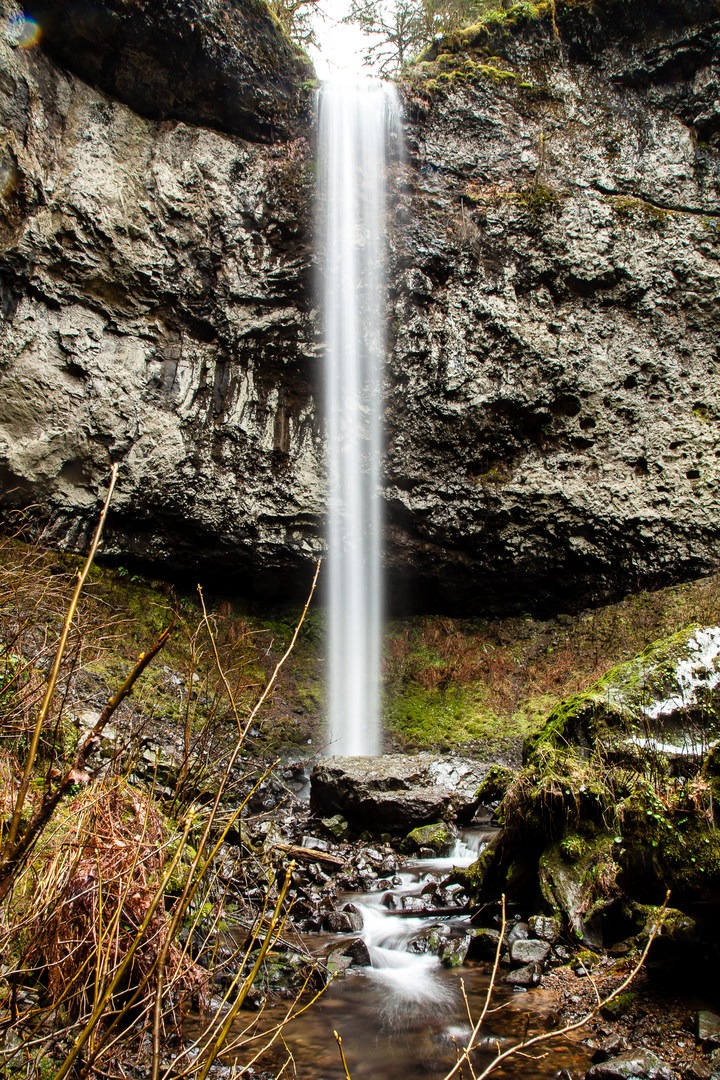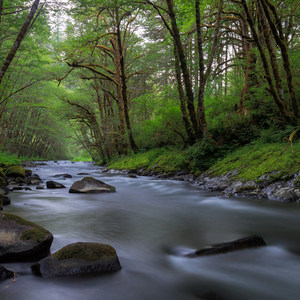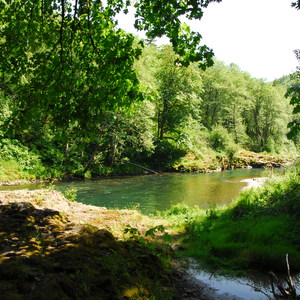Oregon’s take on Niagara Falls is decidedly smaller than the iconic East Coast formation, and observing this quiet little falls doing its work doesn't necessarily invoke a sense of nature’s awesome power. But does that mean you should skip it? Absolutely not! Additionally, the hike actually has a two-for-one payoff, because you’ll also see the more distinctive Pheasant Creek Falls to the right just after the Niagara Falls viewpoint.
Oregon’s 107-foot Niagara Falls is a wonderful reward after a short hike through a quintessential coastal forest. The trail leads you down through a thick understory that is especially impressive when you pass the several examples of the forest life-cycle at work, where you can almost feel the mosses and vines working the nutrients out of the standing dead trees.
Winter is the best season to see both waterfalls in their full glory, especially because that's when the smaller creeks that flow from Niagara Point enjoy their maximum flow. Summer hosts a quieter falls but a welcome respite from summer heat thanks to the thick foliage. As you approach the waterfall basin, you will see Niagara Falls on the left, spreading and spilling down the fractured basalt. While pretty, Niagara Falls are upstaged by the more dramatic Pheasant Creek Falls, a narrow band that makes a clean plunge into a small pool. Though the two are frequently confused and some maps mislabel the creeks, just remember that Pheasant Creek Falls is named for the creek that forms them and which flows from the south, whereas Niagara Falls is formed by unnamed creeks that flow from Niagara Point, due east.
If you find that these two waterfalls just weren’t enough for you, consider a stop at Munson Falls, the Coast Range’s tallest waterfall, just north on US-101.




























Comments
Sign In and share them.